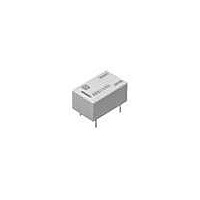ARS1312 Panasonic, ARS1312 Datasheet - Page 11

ARS1312
Manufacturer Part Number
ARS1312
Description
Low Signal Relays - PCB 500MA SPST 12VDC SILENT NON-LATCH PCB
Manufacturer
Panasonic
Datasheet
1.ARS14A12.pdf
(11 pages)
Specifications of ARS1312
Contact Form
1 Form C
Coil Voltage
12 VDC
Coil Current
16.7 mA
Coil Type
Single Side Stable
Power Consumption
200 mW
Contact Carry Current
500 mA
Termination Style
Solder Terminal
Isolation
30 dB at 3 GHz
Insertion Loss
0.3 dB at 3 GHz
Maximum Switching Current
500 mA
Contact Rating
500 mA
Lead Free Status / RoHS Status
Lead free / RoHS Compliant
Insertion loss compensation
The insertion loss of relay itself is given
by subtracting the insertion loss of
shortcircuit the COM and the NC (or NO).
(signal path and two connectors)
9. Others
1) The switching lifetime is defined under
the standard test condition specified in
the JIS* C 5442 standard (temperature
15 to 35°C
75%). Check this with the real device as it
is affected by coil driving circuit, load
type, activation frequency, activation
phase, ambient conditions and other
factors.
Also, be especially careful of loads such
as those listed below.
• When used for AC load-operating and
the operating phase is synchronous,
rocking and fusing can easily occur due
to contact shifting.
• When high-frequency opening and
closing of the relay is performed with a
load that causes arcs at the contacts,
nitrogen and oxygen in the air is fused by
the arc energy and HNO
can corrode metal materials.
59 to
95°F, humidity 25 to
3
is formed. This
All Rights Reserved © COPYRIGHT Panasonic Electric Works Co., Ltd.
Three countermeasures for these are
listed here.
(1) Incorporate an arc-extinguishing
circuit.
(2) Lower the operating frequency
(3) Lower the ambient humidity
2) Use the relay within specifications
such as coil rating, contact rating and on/
off service life. If used beyond limits, the
relay may overheat, generate smoke or
catch fire.
3) Be careful not to drop the relay. If
accidentally dropped, carefully check its
appearance and characteristics before
use.
4) Be careful to wire the relay correctly.
Otherwise, malfunction, overheat, fire or
other trouble may occur.
5) If a relay stays on in a circuit for many
months or years at a time without being
activated, circuit design should be
reviewed so that the relay can remain
non-excited. A coil that receives current
all the time heats, which degrades
insulation earlier than expected. A
latching type relay is recommended for
such circuits.
6) To ensure accurate operation of the
latching type amidst surrounding
temperature changes and other factors
that might affect the set and reset pulse
times, we recommend a coil impress set
and reset pulse width of at least 30 ms at
the rated operation voltage.
7) The latching type relay is shipped in
the reset position. But jolts during
transport or impacts during installation
can change the reset position. It is,
therefore, advisable to build a circuit in
which the relay can be initialized (set and
reset) just after turning on the power.
8) If silicone materials (e.g., silicone
rubbers, silicone oils, silicone coating
agents, silicone sealers) are used in the
vicinity of the relay, the gas emitted from
the silicone may adhere to the contacts of
the relay during opening and closing and
lead to improper contact. If this is the
case, use a material other than silicone.
For general cautions for use, please
refer to the “General Application
Guidelines”.
RS (ARS)


